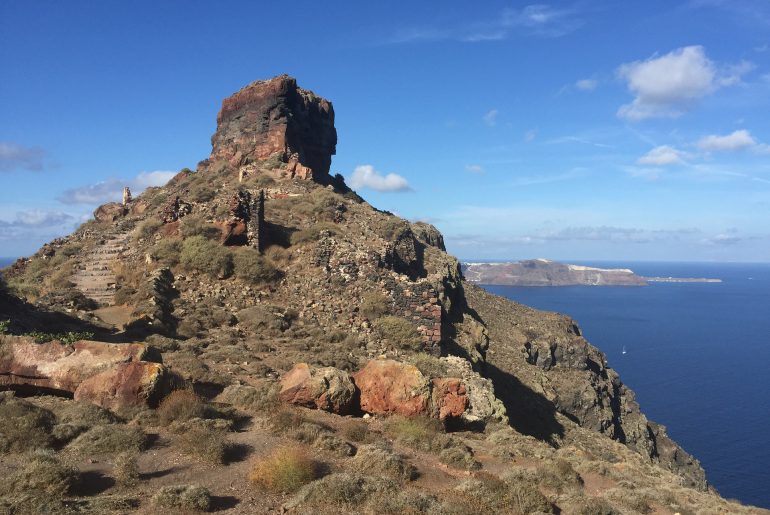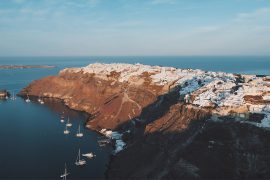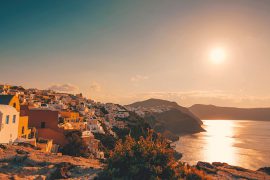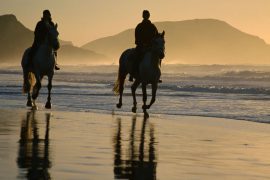Skaros Rock is one of those scenic spots that attract the crowds. But beyond its location, this stretch of land has played an important role in the history of the island.
It is hard to believe that here once stood the capital of Santorini. Traces of the majestic castle that dominated this rocky headland are hardly visible, as earthquake after earthquake, decimated the thriving community that took advantage of the rough terrain to keep their town safe from the threat of the pirates. In fact, during its 600 years of existence, Skaros was never conquered. The castle was built in the late Byzantine period, and the settlement remained the capital of the island until the 18th century. However, people began abandoning the town in early 17th century. With a little imagination, you can picture the majestic beauty of this place as it once stood, however, there is only one place where you can see what Skaros was like during its heyday: a drawing in pencil, which belongs to the collection of Thomas Hope, at the Benaki Museum. There are also written testimonies about Skaros, like the one left by E.M. Leycester (1850) of the Royal Geographical Society.
“I am now seated in front of the ducal castle of Skaro; my position is under a huge step of red lava and slag, which supports part of Merovouli (Imerovigli). The promontory of Skaro is separated from me by a high ridge which connects it with the mainland; its formation is striking as to colour and shape, being of dark grey, and red lava mixed up with ashes, pumice and pozzolana; its most elevated part is a great red and black crag with a flat top rising 1000 feet above the waters of the gulf, which from time to time has been much diminished, as the earthquakes have shaken down large fragments into the sea.
Around this crag are the houses of the now ruined town of Skaro, a most extraordinary group, perched one over another where a crevice in the sides of the precipice will admit of it, and in most frightful positions, the out wall of the buildings being in a line with the perpendicular rocks. I sprung a covey of partridges among this mass of ruins, and was once near falling into a vault full of skulls and other human bones; now a living soul now inhabits this place”.
Today, however, no one inhabits the area. There is a small church on the western edge of the beautiful cliff, Ekklisia Theoskepasti, used for special events mainly by the locals. It is as charming as any other you will see on the island with its brilliant white walls and striking blue dome.
The walk to Skaros Rock may not be the easiest one, but it is worth the effort. The views from here are beyond compare and words cannot describe the colors of the sunset. Imerovigli, the balcony of the caldera, has its distinctive appeal and the whole area deserves exploring.





1 Comment
Pingback: Best Things to Do in Santorini - Santo Maris Blog